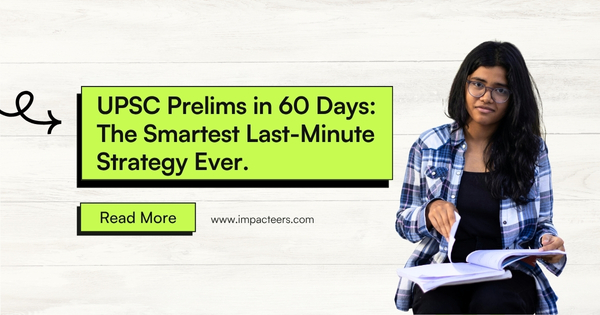earn how to dress for an interview the right way. Discover dressing styles that impress recruiters, mistakes to avoid, and expert tips for freshers and experienced candidates

Learn how to dress for an interview the right way. Discover dressing styles that impress recruiters, mistakes to avoid, and expert tips for freshers and experienced candidates.
First impressions matter—especially in job interviews. No matter how prepared you are with your answers, the way you dress speaks volumes before you even say a word. Whether you’re a fresher attending your first walk-in interview, an engineering graduate seeking your first job, or someone with years of experience aiming for your dream role, dressing style plays a crucial role in how recruiters perceive you.
So how do you choose what to wear to an interview? What should you absolutely avoid? How does industry type, job level, or even company culture affect your dressing decisions?
In this guide, we’ll break down the dos and don’ts of interview dressing, share real-life tips for men and women, and explain how Impacteers courses not only prepare you with interview questions and answers but also guide you on professional presentation, including dress code awareness.
Dress for an Interview: Why Dressing Right Matters
You may have solved every Java programming question, nailed your aptitude tests, and prepared thoughtful responses to HR questions, but showing up in the wrong outfit can instantly derail your efforts.
A recruiter’s first thoughts are often based on:
- Your cleanliness and grooming
- Your attention to detail
- How well you understand professional norms
In just 7 seconds, a hiring manager can form an opinion about you—before they even ask the first question.
What Works: General Interview Dress Code Rules
No matter what job you’re applying for—be it in engineering, IT, consulting, management, or service sectors—certain dressing rules are universal.
For Men:
| Item | Recommendation |
| Shirt | Light-colored, well-ironed, full-sleeved |
| Trousers | Formal pants in black, navy blue, or charcoal grey |
| Shoes | Polished formal shoes (black or brown) |
| Tie (optional) | Subtle colors for formal or consulting jobs |
| Hair & Beard | Well-trimmed and neat |
| Watch | Simple, non-distracting |
For Women:
| Item | Recommendation |
| Top/Shirt | Light colors, no flashy patterns |
| Trousers/Kurti/Salwar | Formal pants or modest Indian wear (cotton preferred) |
| Footwear | Closed-toe shoes or flats, comfortable and clean |
| Hair | Tied neatly; avoid loose, unkempt hair |
| Accessories | Minimal; avoid loud earrings or bangles |

Dress for an Interview: Common Mistakes That Don’t Work
For Everyone:
- Wrinkled or stained clothing
- Overpowering perfume
- Bright/neon colors
- Sneakers or sandals
- Heavy makeup or flashy accessories
- Casual or party wear
Real Examples of Mistakes:
- A fresher wore a t-shirt and jeans to a campus placement for a core engineering company.
- A candidate wore strong cologne to a walk-in and made the interview room uncomfortable.
- Someone wore sunglasses on their head during an HR round.
These might seem minor—but they make you appear careless or not serious about the opportunity.
Tailoring Your Dress Code to the Industry
Consulting & Finance:
- Go fully formal. Shirts, trousers, closed shoes, ties (for men), blazers optional but preferred.
IT & Engineering:
- Business casual works in some roles, but first interviews always call for formal dressing.
Creative/Media:
- Slightly relaxed codes apply, but neatness and coordination matter. Avoid torn jeans, loud prints.
Government/Public Sector:
- Stick to traditional formal. Indian wear is acceptable if it’s clean and modest. Be conservative.
Education/Teaching:
- Clean and modest attire. Light colors, comfortable shoes, minimal accessories.
What Freshers Often Get Wrong About Interview Dress
Freshers sometimes confuse “smart” with “stylish” or “formal” with “expensive.” You don’t need branded clothes—you need neat, simple, and confidence-boosting outfits.
Freshers’ Mistakes:
- Wearing college fest t-shirts
- Trying trendy blazers or loafers
- Wearing sports watches or smartwatches that beep
What to Do:
- Borrow if you must—but ensure your outfit fits well and reflects your seriousness
Dress for an Interview: Walk-In Interview Style Tips
Walk-ins are often crowded, hot, and last all day.
- Wear breathable fabrics
- Carry a clean folder (not plastic bags)
- Avoid anything flashy—HR will remember you for the wrong reason
Impacteers Job Preparation Courses include modules on walk-in etiquette, including dress, document organization, and small talk confidence.
Dress Code for Virtual Interviews
The rules apply even if you’re on camera.
Do:
- Dress fully—head to toe. (You never know when you’ll need to stand up!)
- Use solid backgrounds
- Sit upright with good posture
Don’t:
- Wear hoodies or sleeveless tops
- Keep distractions in your frame (posters, beds, fans, etc.)

How Impacteers Helps You Dress for Success
While most courses focus on interview questions and answers, Impacteers takes a 360-degree approach. They offer:
- Dressing modules tailored for industry-specific roles
- Mock interviews with feedback on appearance and communication
- Tips for body language and grooming
- Custom guides for first-gen college students or those from rural institutes on professional presentation
You don’t need to guess what to wear. With Impacteers, you learn it step by step.
Conclusion
Getting hired isn’t just about answering technical interview questions or passing the paper round—it’s about how you present yourself as a potential team member. Dressing well shows that you understand the job, respect the process, and are ready to take responsibility.
As a fresher or graduate, this might be your first professional interaction—but with the right dressing style, mindset, and practice, you can walk in with confidence and walk out with an offer.
And if you’re unsure where to begin, let Impacteers guide you. From resume building to dressing advice, their placement-focused courses help students across India prepare holistically for every interview scenario.
Because how you show up—matters just as much as what you say.
FAQs
Q1. Is it okay to wear Indian ethnic wear to an interview?
Yes, especially for women. A neat cotton kurti or saree works well—just avoid flashy prints or colors. Men should avoid kurta-pajamas unless applying to a cultural or government role.
Q2. Do I need to wear a tie for engineering or IT roles?
Not compulsory. A clean shirt and formal pants are enough. But if you want to look sharper, a basic tie adds polish.
Q3. What kind of shoes are best for interviews?
Closed-toe formal shoes. Avoid sandals, sneakers, or noisy heels. Clean, well-polished shoes complete your look.
Q4. Can I carry a backpack instead of a file folder?
Avoid backpacks if possible. Carry a small file folder with your resume, certificates, and ID neatly arranged. It’s more professional.
Q5. Does Impacteers really help with non-academic skills like dress and etiquette?
Yes! Impacteers’ courses are designed to prepare you for real-world placements—not just paper-based tests. That includes grooming, communication, and professional behavior.
learn More >>> https://blog.impacteers.com
About Us >>> https://www.impacteers.com



Post Comment